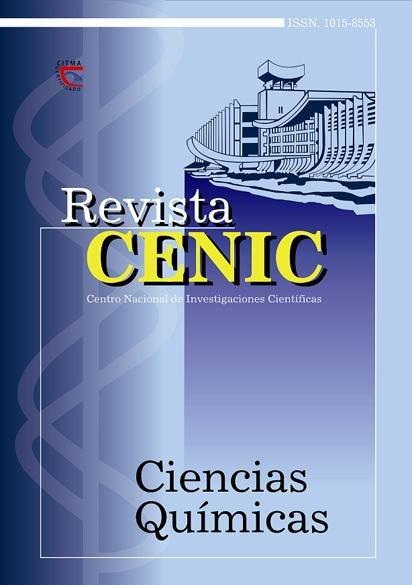Evaluation of three oxazolines as inhibitors of corrosion by electrochemical techniques Icono de Validado por la comunidad
Abstract
A study about the possible inhibitor effect on atmospheric conditions of three compounds of the family of 2-oxazoline using modern electrochemical techniques was carried out. These compounds were obtained through non conventional chemical synthesis using microwaves. The compounds studied were: 2-bencyl-4,4-dihydroximethyl-2-oxazoline; 2-heptadicenyl-4,4-bis(estearoiloximethyl)-2-oxazoline, 2-heptadicenyl-4,4-dihydroximethyl-2-oxazoline. Oxazolines were dissolved in basic oil at 70 oC at different concentrations. AISI 1020 was used as electrodes. Different electrochemical techniques (EIS, polarization, polarization resistance
and potential against time). The results show that two oxazoline compounds of the type are able to adsorb themselves on the metal surface. Furthermore, the higher effectivity concentration was determined. The 2-bencyl-4,4-dihydroximethyl-2-oxazoline dissolved in basic oil at 0,2 % (w/w) does not present propierties which inhibit the corrosion process. In the case of 2-heptadicenyl-4,4-bis(estearoiloximethyl)-2-oxazoline at 2 % (w/w) an delay of the atmospheric corrosion processes is observed, while for -heptadicenyl-4,4-dihydroximethyl-2-oxazoline, in higher concentrations than 0.75 % (w/w) a diminishing corrosion rate is observed. In the last case the action mechanism corresponds to a passivator.

Downloads
Published
How to Cite
Issue
Section
License
Copyright (c) 2002 Copyright (c) 2002 Revista CENIC Ciencias Químicas

This work is licensed under a Creative Commons Attribution-NonCommercial-ShareAlike 4.0 International License.
Los autores que publican en esta revista están de acuerdo con los siguientes términos:
Los autores conservan los derechos de autor y garantizan a la revista el derecho de ser la primera publicación del trabajo al igual que licenciado bajo una Creative Commons Atribución-NoComercial-CompartirIgual 4.0 que permite a otros compartir el trabajo con un reconocimiento de la autoría del trabajo y la publicación inicial en esta revista.
Los autores pueden establecer por separado acuerdos adicionales para la distribución no exclusiva de la versión de la obra publicada en la revista (por ejemplo, situarlo en un repositorio institucional o publicarlo en un libro), con un reconocimiento de su publicación inicial en esta revista.
Se permite y se anima a los autores a difundir sus trabajos electrónicamente (por ejemplo, en repositorios institucionales o en su propio sitio web) antes y durante el proceso de envío, ya que puede dar lugar a intercambios productivos, así como a una citación más temprana y mayor de los trabajos publicados (Véase The Effect of Open Access) (en inglés).













